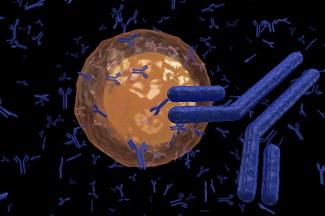The Lymphatic System in Venous Leg Ulcers
February 20, 2020
Understanding that February is venous leg ulcer (VLU) month, we would be remiss to exclude a consideration of the critically important role played by the lymphatic system. As such, I want to highlight the work of Dr. Tom O'Donnell in a recent editorial written on this subject.1
Lymphatic System in Venous Leg Ulcer Pathogenesis and Clinical Course
Although the causes of lower limb ulcerations are complex and multifactorial, most are related to chronic venous insufficiency.2 Chronic edema in the lower extremities is usually an expression of phlebolymphedema, a combination of venous and lymphatic dysfunction. Phlebolymphedema predisposes to the development of cellulitis,3 which not only is the most common cause of hospitalization and increased health care utilization, but also hampers VLU healing.2 Conversely, effective phlebolymphedema treatment has been shown to improve VLU healing.4,5
Although the causes of VLUs are complex, VLUs are thought to be exacerbated by compromised local immunity.6 VLU healing can be impaired by local infection,2 which is closely associated with lymphatic failure. As Drs. Peter Mortimer and Stanley Rockson3 explained in 2014, "Lymphatics have an important immune surveillance function, as they represent the principal route of transport from tissues for antigen and immune cells. As such, lymphatics are important for adaptive immunity." VLUs are driven by the severity of venous disease but also exacerbated by the edema, skin changes, and recurrent cellulitis infections that are endemic to this patient population.6
Failure to correct lymphatic dysfunction paves the way for a spiral of negative complications including ulceration.6 This ultimately leads to increased physician office visits, costly treatments, and hospitalizations.7
Conclusion
Despite evidence demonstrating the importance of the lymphatics in advanced venous disease, there remains a large gap in recognition and treatment before VLU formation. Effective treatment of phlebolymphedema is associated with improved outcomes, reduced costs, and hastened healing of VLUs. Modern treatment protocols for chronic venous insufficiency and VLUs should clearly include lymphatics therapies. By utilizing earlier incorporation of lymphatic treatment in management protocols, including complete decongestive therapy and advanced pneumatic therapy devices, patients can better manage their symptoms and move toward more normal function and improved quality of life.
References
1. O'Donnell T. Son A, Izhakoff J, Niecko T, Gaebler J. Iafrati M. The proportion and causes of lymphedema in a large administrative insurance database. J Vasc Surg. 2019;7(2):285.
2. O'Meara S, Al-Kurdi D, Ologun Y, Ovington LG, Martyn-St James M, Richardson R. Antibiotics and antiseptics for venous leg ulcers. Cochrane Database Syst Rev. 2013;12:CD003557.
3. Mortimer PS, Rockson SG. New developments in clinical aspects of lymphatic disease. J Clin Invest. 2014;124(3):915-921.
4. Smith PC, Sarin S, Hasty J, Scurr JH. Sequential gradient pneumatic compression enhances venous ulcer healing: a randomized trial. Surgery. 1990;108(5):871-875.
5. Rasmussen JC, Aldrich MB, Tan IC, et al. Lymphatic transport in patients with chronic venous insufficiency and venous leg ulcers following sequential pneumatic compression. J Vasc Surg Venous Lymphat Disord. 2016;4(1):9-17.
6. Moffatt CJ, Franks PJ, Doherty DC, Martin R, Blewett R, Ross F. Prevalence of leg ulceration in a London population. Q J Med. 2004;97(7):431-437.
7. Lerman M, Gaebler JA, Hoy S, et al. Health and economic benefits of advanced pneumatic compression devices in patients with phlebolymphedema. J Vasc Surg. 2019;69(2):571-580.
About the Author
M. Mark Melin, MD, FACS, RPVI, FACCWS is a graduate of the University of Minnesota Medical School, completed his General Surgery residency and Vascular Fellowship at the Mayo Clinic in Rochester Minnesota and is currently the West Campus Medical Director of the Wound Healing Institute at M Health Fairview (University of Minnesota).
The views and opinions expressed in this blog are solely those of the author, and do not represent the views of WoundSource, HMP Global, its affiliates, or subsidiary companies.









Follow WoundSource
Tweets by WoundSource